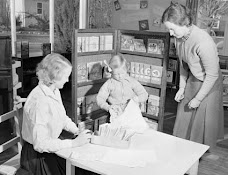Jack M. Maness, author of the above article defines Library 2.0 as "the application of interactive, collaborative, and multi-media web-based technologies to web-based library services and collections."
Another definition could be "Library 2.0 is the framework supporting diverse web-based media for the purpose of exchange of information via online collaboration and interaction.”
According to Maness, Library 2.0 is a “user-centred virtual community”, its four essential elements being 1) User Centred 2) Provides a multi-media experience 3) Socially rich and 4) Communally innovative.
Libraries are already adopting synchronous messaging, or instant messaging, providing chat reference services to their clients. Maness considers this service dynamic, allowing collaboration between clients and librarians; libraries already have links to their chat reference services within resources themselves. The idea of a client being offered online assistance as they browse through on OPAC is quite feasible. It is worth considering whether a client, browsing an OPAC on their home computer, would consider this helpful or an invasion of privacy.
The many applications of streaming video and audio media for Library 2.0 are worth mentioning. Interactive tutorials are already available in libraries; however, as Maness points out, they do not give the user the opportunity to interact with others. His argument that tutorials could take the form of multi-media chat rooms or wikis to provide users the opportunity to learn first hand is convincing.
The application of blogs and wikis has wide possibilities. Because of easy access, and in the case of wikis the ability for almost anyone to change information, some librarians may find it difficult to adapt to this evolving technology, however, they are great tools for social interaction and group study.
Tagging as a Library 2.0 tool opens up the opportunity for users to create subject headings; adding and changing data and metadata. As Maness states “Users could tag the library’s collection and thereby participate in the cataloguing process”.
Maness tells us that libraries are creating RSS feeds “including updates on new items in a collection, new services and new content in subscription databases”.
The view that Library 2.0 is a mashup: user-centred and user-driven is accurate. It is a fusion of traditional library services and ground-breaking technology. Its cutting-edge technology is an exciting development, providing libraries the opportunity to establish connections with the communities they serve via web-based technologies. The potential for interaction between library staff / users and users / users is exciting and innovative. The way in which libraries function, while remaining fundamentally community centred, is about to enter a new dimension with interactive and collaborative tools that will bring library and community together.
Wednesday, September 5, 2007
Subscribe to:
Post Comments (Atom)


No comments:
Post a Comment